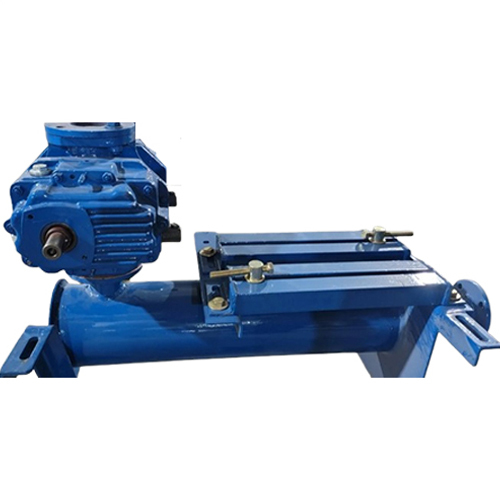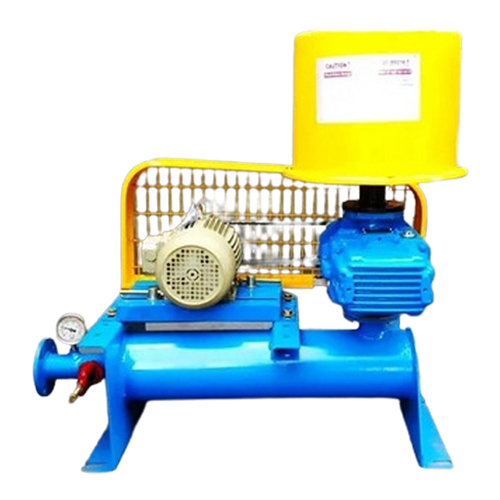Twin Lobe Air Cooled Blower
Price 50000.0 INR/ Piece
Twin Lobe Air Cooled Blower Specification
- Material
- MS
- Size
- Standard
- Product Type
- Twin Lobe Air Cooled Blower
- Color
- Blue
- Usage
- ', W, a, ', ], [, t, e, r
- Application
- [, ]
Twin Lobe Air Cooled Blower Trade Information
- Minimum Order Quantity
- 1 Piece
- Supply Ability
- 100 Pieces Per Month
- Delivery Time
- 2 Week
- Sample Available
- No
- Main Export Market(s)
- [, ', A, s, i, a, ', ]
- Main Domestic Market
- [, ', l, l, , I, n, d, i, a, ', ], A
About Twin Lobe Air Cooled Blower
A Twin Lobe Air Cooled Blower is a type of positive displacement blower commonly used in various industrial applications where the movement of air or gases is required. The "twin lobe" refers to the design of the blowers rotor, which typically consists of two lobes that rotate within a casing to move air.Heres an overview of the key features and benefits of a Twin Lobe Air Cooled Blower: 1. Design and Operation Twin Lobe Rotor: The blower has two rotating lobes (typically of equal size) that mesh with each other. As they rotate, they trap air between the lobes and the casing, then push it out through the discharge port. Air Cooled: These blowers rely on ambient air for cooling, with fins or a cooling system designed into the casing to dissipate heat generated during operation. This is often preferred in situations where external cooling sources (like water) are unavailable or impractical. 2. Applications Industrial Air Conveying: Used in systems where air needs to be moved over long distances, such as in pneumatic conveying or dust collection systems. Aquaculture: Used for oxygenating water in fish farming or aquatic environments. Wastewater Treatment: Applied in aeration tanks where air is needed to promote biological activity in sewage treatment. Vacuum Systems: Can also be used to generate low vacuum pressure in industrial processes. Cooling and Ventilation: Can be used for ventilation in HVAC systems. 3. Benefits High Efficiency: Twin-lobe blowers are known for their ability to provide steady and efficient airflow with minimal energy consumption compared to other types of blowers. Reliability: These blowers are relatively simple in design, making them less prone to mechanical failure and easier to maintain. Compact and Cost-Effective: Air-cooled systems reduce the need for additional cooling mechanisms like water chillers, making them more cost-effective. Quiet Operation: Twin-lobe blowers are generally quieter than some other types of blowers, making them suitable for environments that require low noise levels. 4. Maintenance Lubrication: Depending on the model, the rotors might require periodic lubrication to reduce friction and wear. Filter Systems: In environments where the intake air is contaminated, filters may be used to prevent debris from entering the blower system. Cooling: The cooling fins and system should be checked periodically to ensure they are free from dust or debris, which could impede their ability to cool the blower efficiently. 5. Performance Considerations Flow Rate and Pressure: The performance of a twin-lobe blower is typically rated by its air flow capacity (measured in cubic feet per minute, CFM, or liters per second, L/s) and the pressure it can generate (measured in psi or bar). Operating Conditions: These blowers perform optimally in a wide range of conditions but might not be suited for extreme temperatures or environments with excessive moisture or corrosive gases without proper modifications. 6. Variants Side Channel Blowers: Similar in function but typically used for higher pressures and vacuum applications. Roots Blowers: Another common type of positive displacement blower often confused with twin lobe blowers, although Roots blowers have a slightly different rotor design.FAQs of Twin Lobe Air Cooled Blower:
Q: What is the usage of the Twin Lobe Air Cooled Blower?
A: The Twin Lobe Air Cooled Blower is designed for industrial applications.Q: What material is used for constructing the Twin Lobe Air Cooled Blower?
A: The Twin Lobe Air Cooled Blower is made from MS (Mild Steel).Q: What size is available for the Twin Lobe Air Cooled Blower?
A: The blower is available in a standard size.Q: What color is the Twin Lobe Air Cooled Blower?
A: The blower comes in blue color.Q: What is the application of the Twin Lobe Air Cooled Blower?
A: The application is Industrial, suitable for specific industrial processes.

Price:
- 50
- 100
- 200
- 250
- 500
- 1000+
More Products in Roots Blower Category
Tri-Lobe Air Blower
Price 100000 INR / Set
Minimum Order Quantity : 1 Piece
Color : Blue
Material : CIFG 260, EN19 BS:970
Product Type : Twin & Tri Lobe Roots Blowers
Usage : Water, Oil Well, Water Well, Paper Printer, Food, Boat, Automobile, Cosmetics
Bulker Blower
Price 50000.0 INR / Unit
Minimum Order Quantity : 1 Unit
Color : Blue
Material : MS
Product Type : Bulker Blower
Usage : Industrial
Roots Blower
Price 50000.00 INR / Piece
Minimum Order Quantity : 2 Pieces
Color : Blue
Material : MS
Product Type : Roots Blower
Usage : Water, Oil Well, Air Pump, Food, Boat, Water Well, Automobile, Paper Printer, Other
Blower for STP, ETP,WTP Plant
Price 40000.0 INR / Unit
Minimum Order Quantity : 1 Unit
Color : Blue
Material : MS
Product Type : Blower for STP, ETP,WTP Plant
Usage : Industrial

 Send Inquiry
Send Inquiry






 Send Inquiry
Send Inquiry Send SMS
Send SMS Call Me Free
Call Me Free